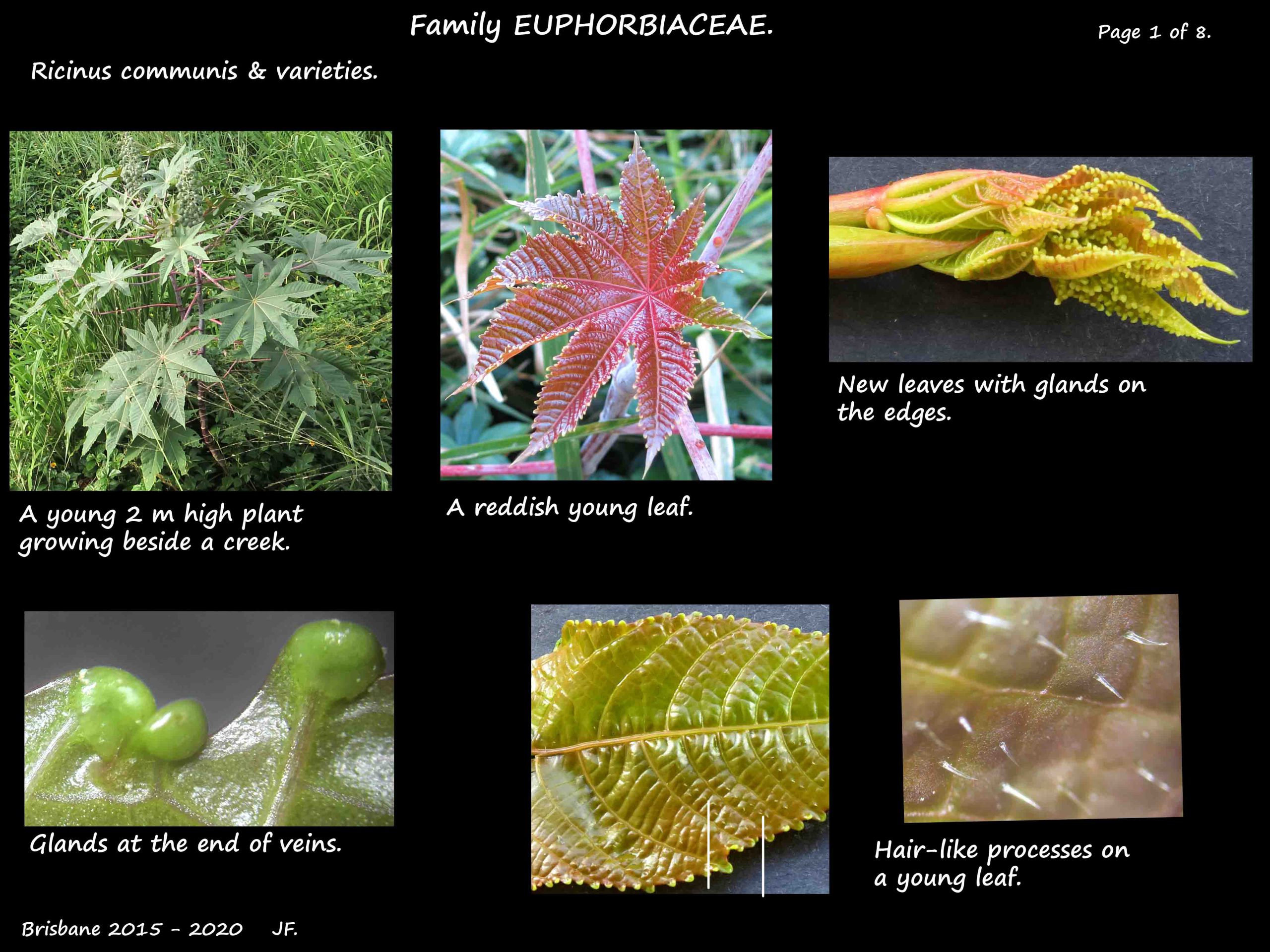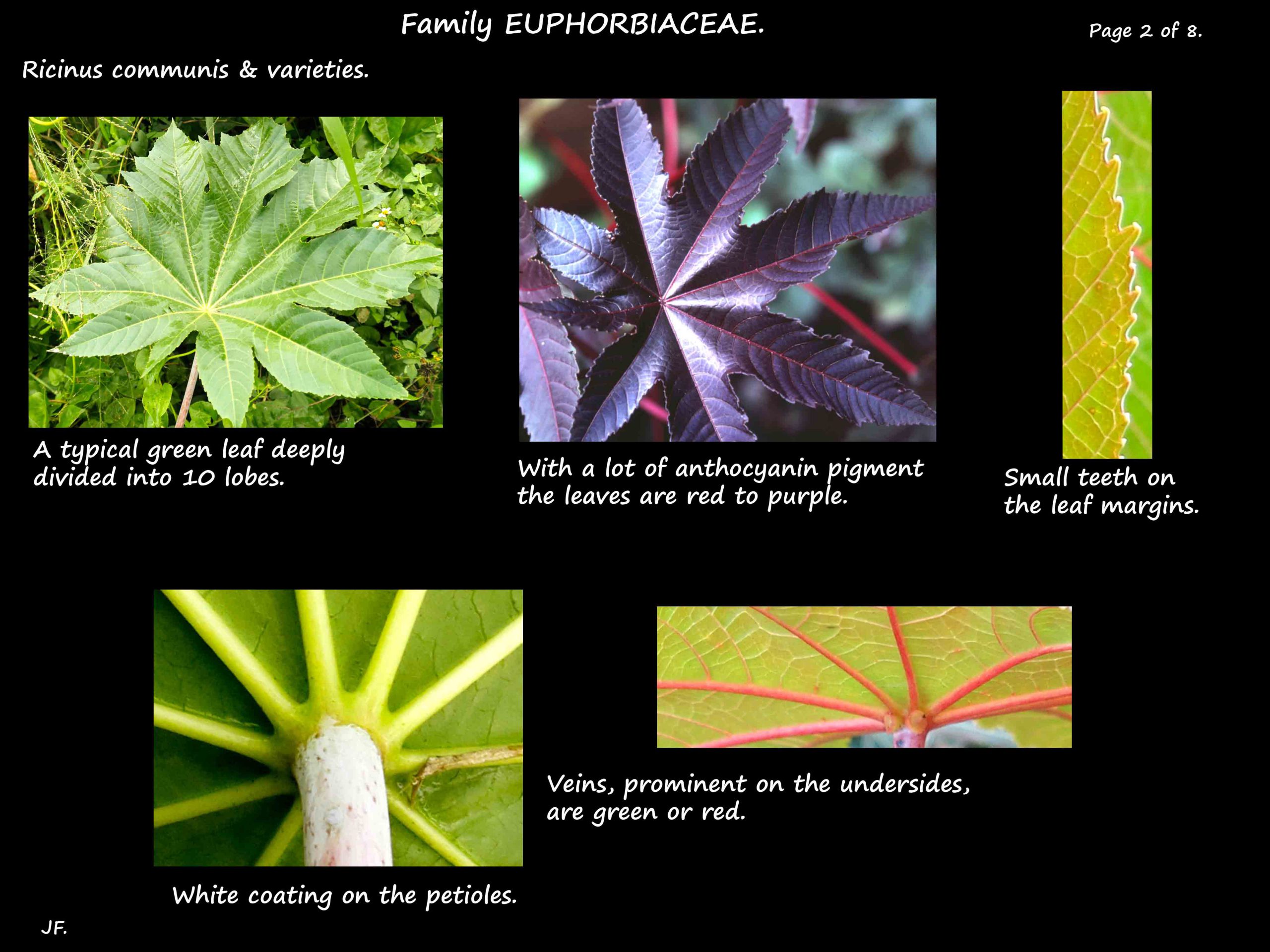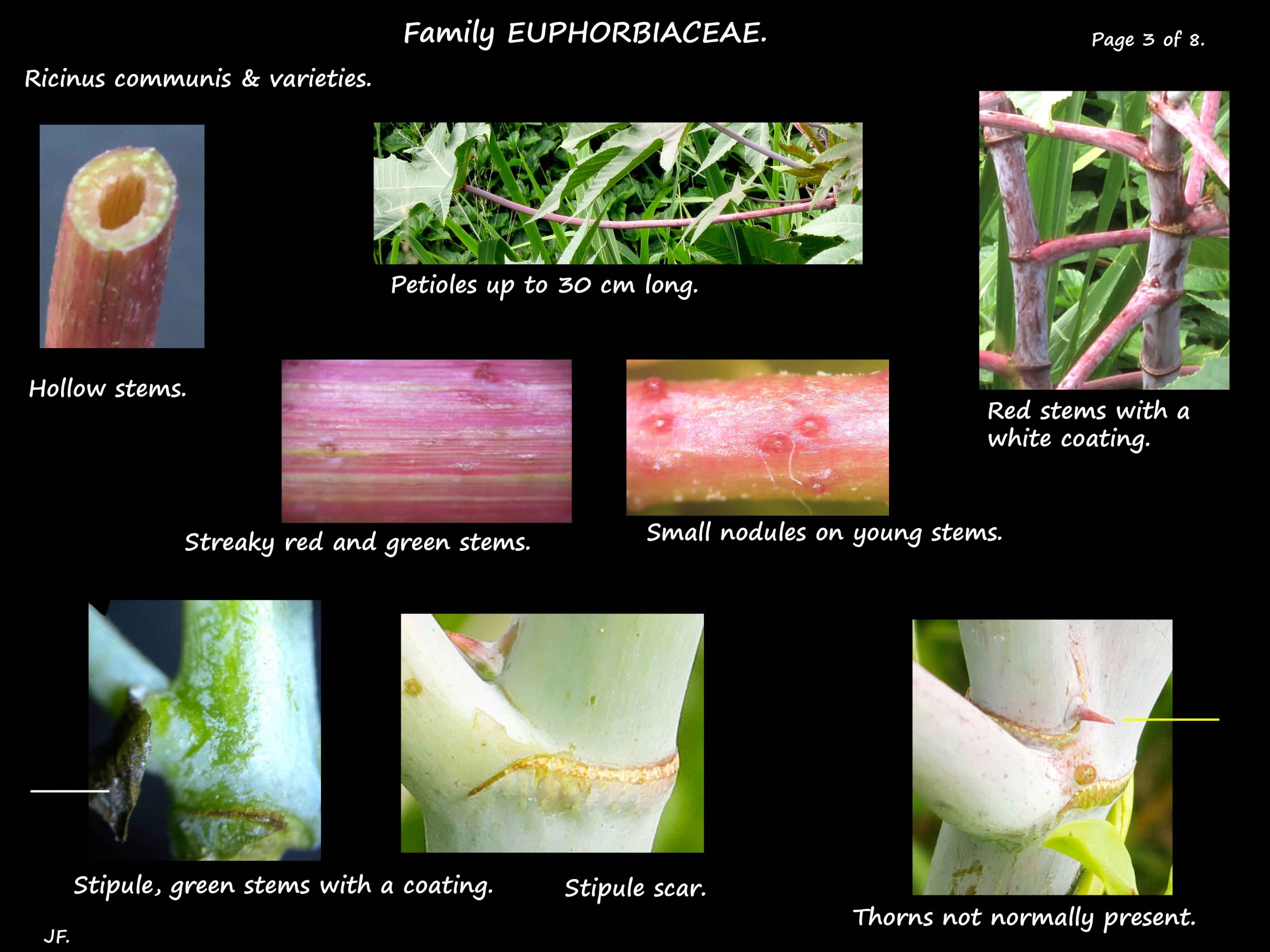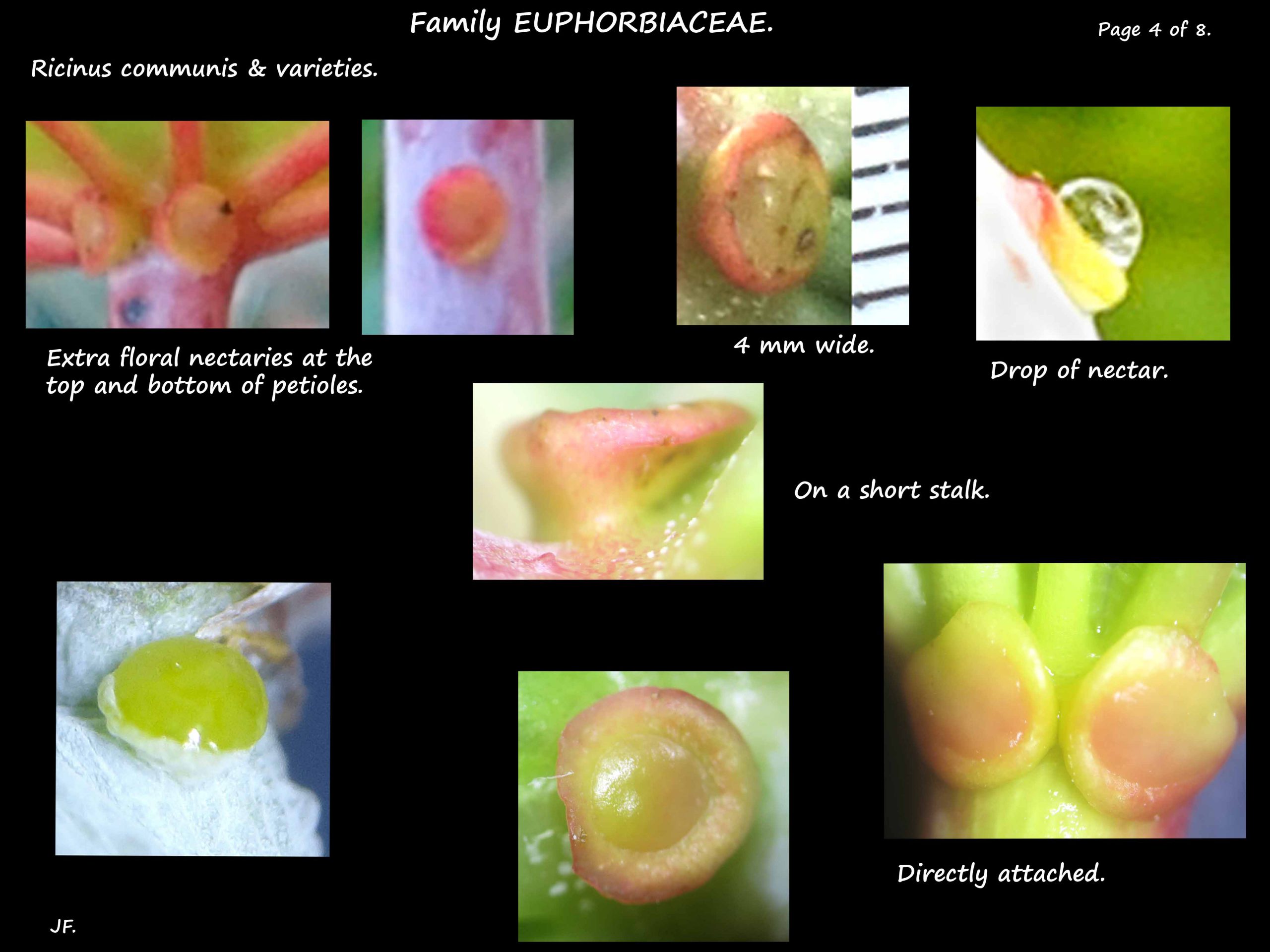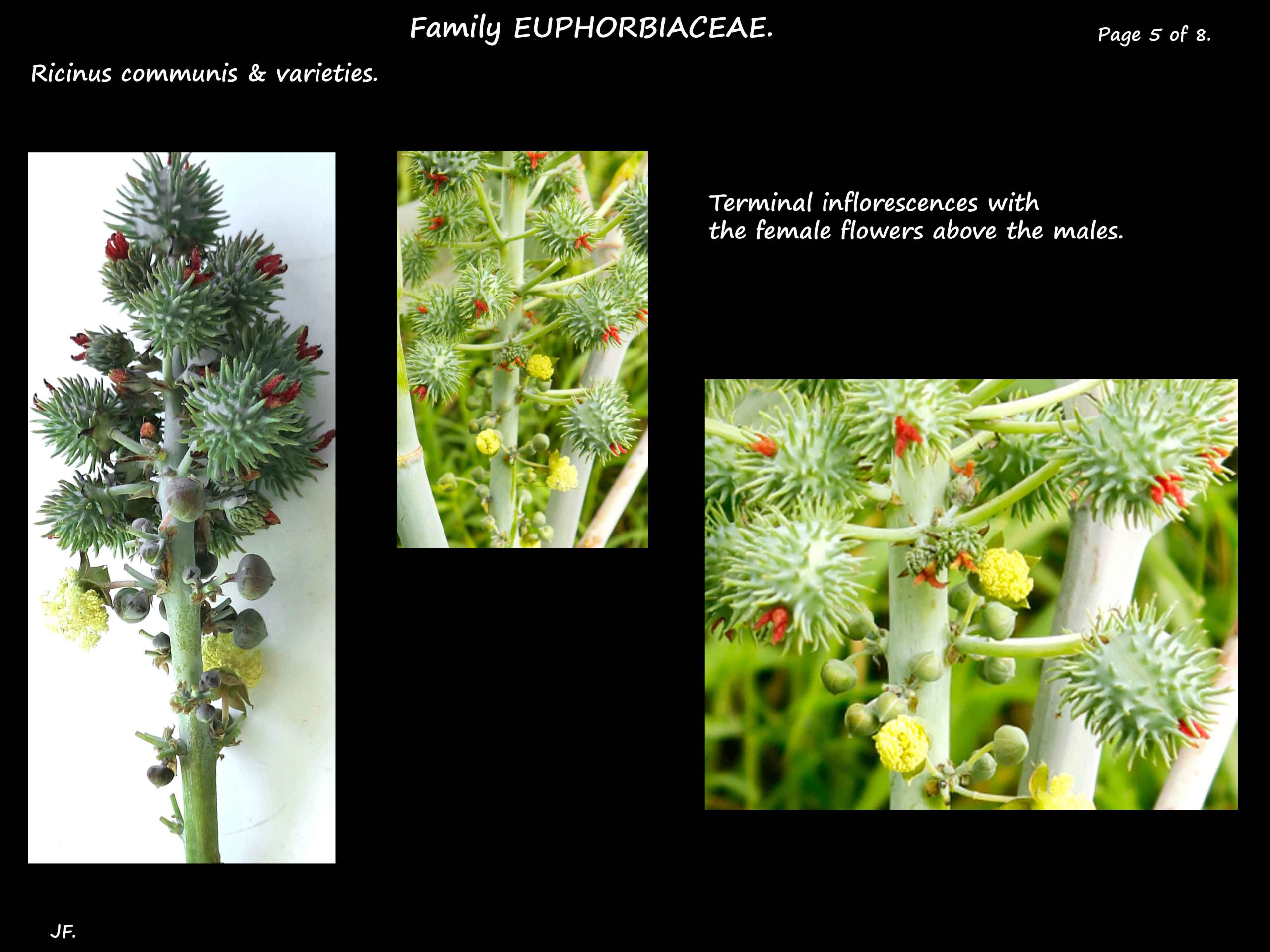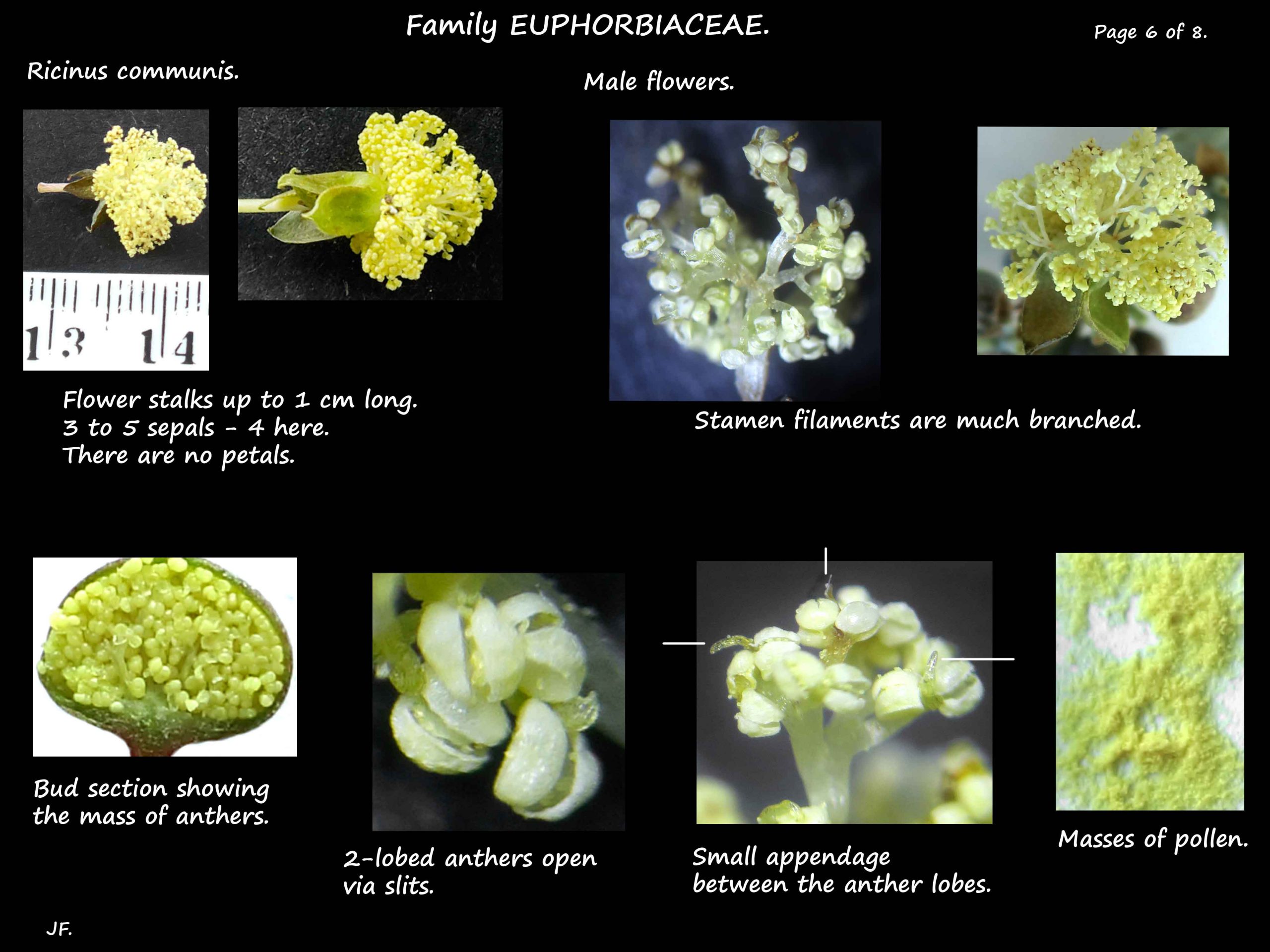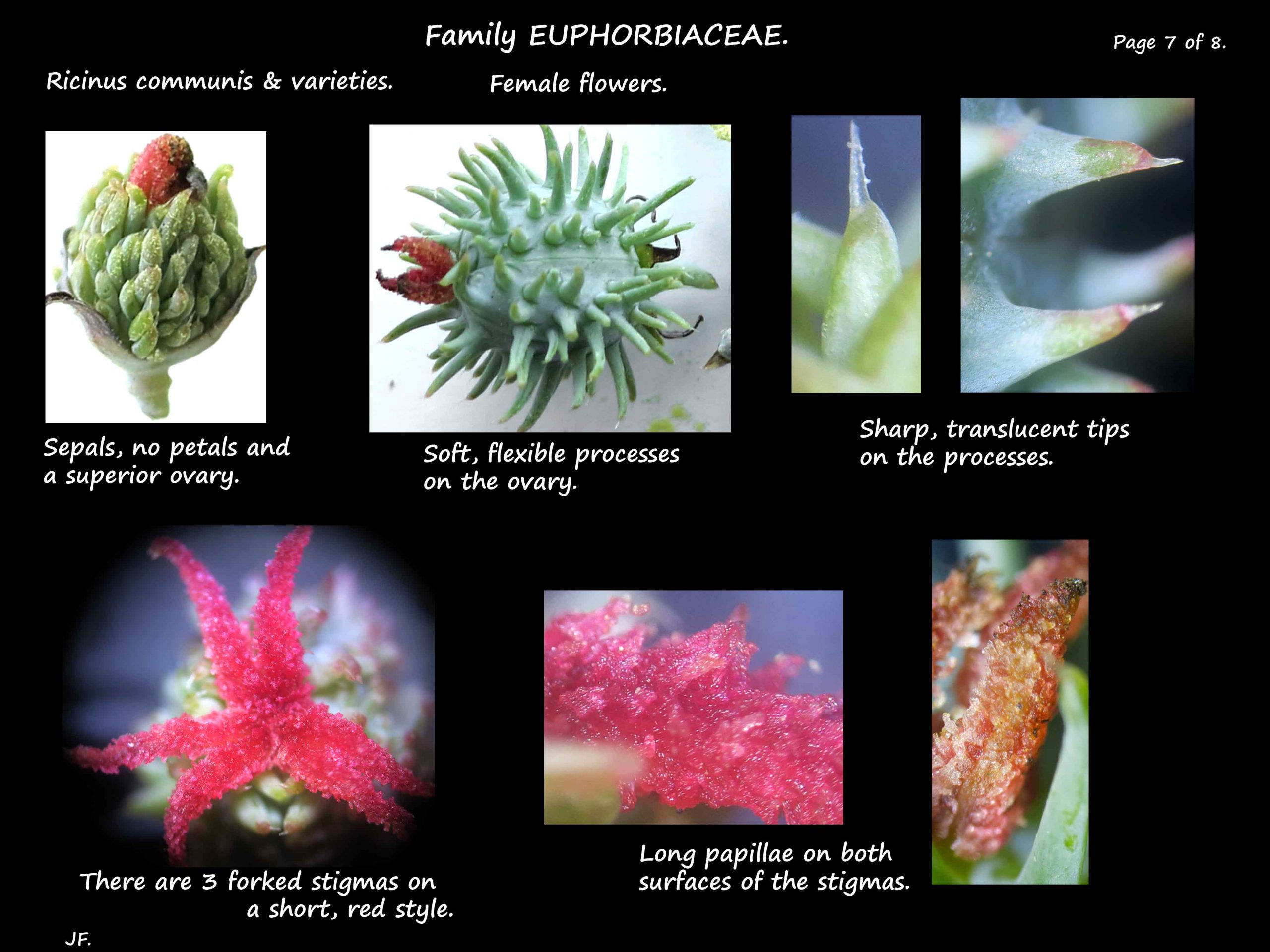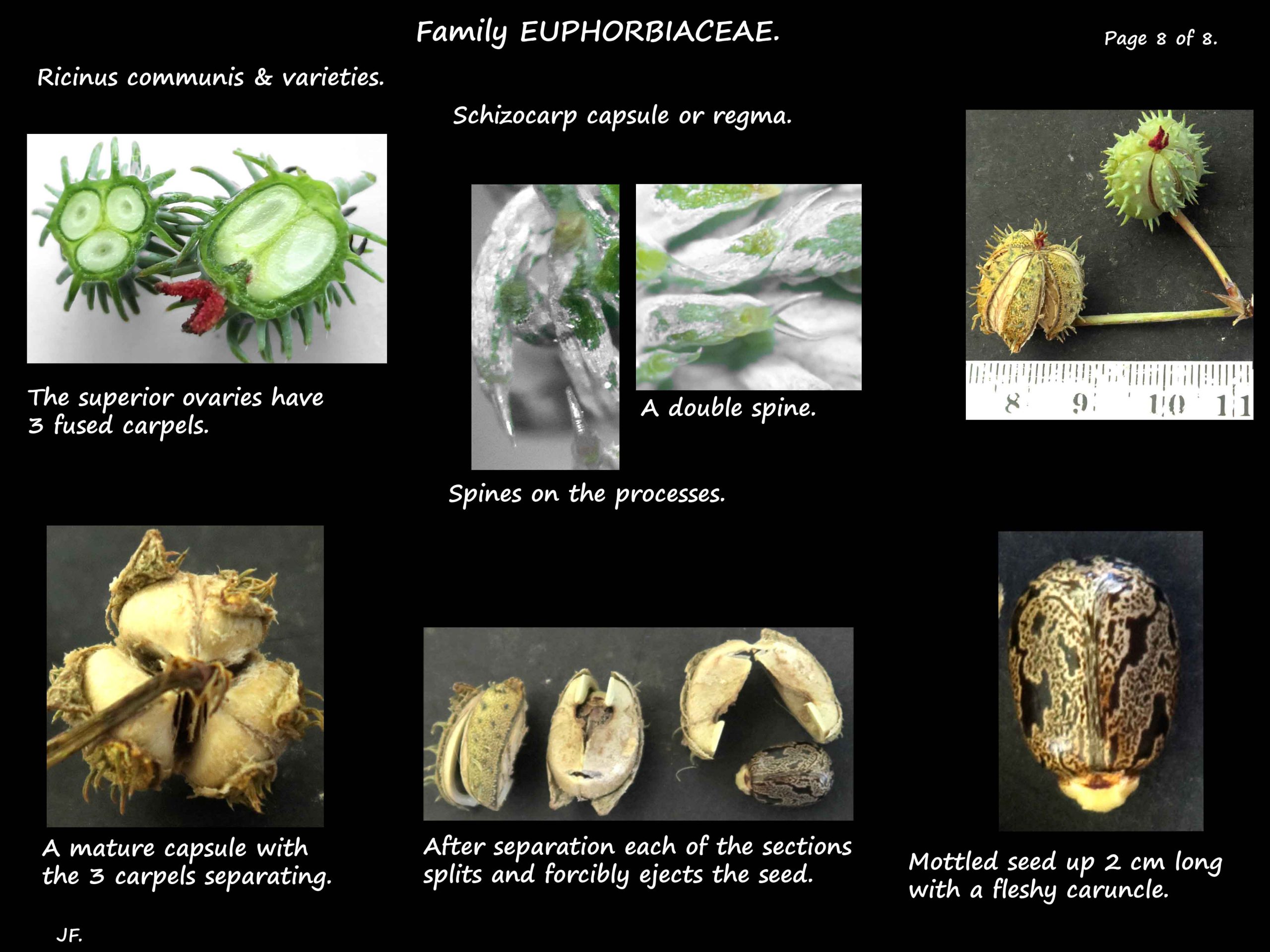Ricinus communis.
Family Euphorbiaceae > Subfamily Acalyphoideae > Tribe Acalypheae > Subtribe Ricininae.
The Castor oil plant is the only species in the genus.
It is naturalised in Queensland where it is a weed.
Although only a single species its appearance can be very variable.
There are also numerous cultivars bred as ornamentals or for oil production.
It is a fast growing, annual shrub or perennial small tree that produces suckers.
They can grow up to 12 m high.
The hollow, smooth stems are green to greyish-green sometimes with a red tinge.
Young branches have a whitish coating and fine outgrowths like hairs.
In older plants the stem and branches may be woody.
The alternately arranged leaves are peltate with the stalk attached away from the edge.
The red or purplish petioles are up to 30 cm long.
There are glandular nectaries at the top and bottom of the petiole.
The stipules are joined and fall early leaving a scar.
The shiny young leaves are reddish and the teeth, at the end of a vein, have a small gland.
Older leaves are green or bluish-green.
Leaves contain varying amounts of red anthocyanin so can also be bronze, dark red or purple.
The wide blades, up to 60 cm long, are palmately divided into 7 to 10 (5 to 12) lobes.
The margins have sharp teeth and each lobe has a central vein that is prominent underneath.
Inflorescences, up to 15 cm long, are spikes on the ends of the main or side branches.
There are dark, triangular bracts that fall off early.
The flowers are either male or female.
The female flowers are at the top of the spike and the males underneath.
The yellow-green flowers are on short stalks up to 1 cm long.
They have no petals but have 3 – 5 sepals that are 5 to 8 mm long.
Male flowers have much branched stamen filaments holding up to 100 anthers.
The small, globular, cream or yellow, basifixed anthers have 2 sacs that open via slits.
There is a small, thin projection from the connective tissue between the anthers.
The female flowers have 3 – 5 green to reddish sepals that fall off early.
The superior ovary has 3 fused carpels each with one ovule with axile placentation.
It is covered by softish, flexible papillae often with a translucent spine or hair.
The short style has 3 stigmas that may branch once.
The pink to red stigmas have long papillae.
The fruit are round, egg-shaped or 3-lobed capsules up to 3 cm wide.
They are covered in processes with sharp tips.
The fruit, initially green with purplish or red tints become dry and brown.
When mature the capsule splits into 3 bivalved sections (the 3 carpels).
Each section splits into its cavity and forcibly ejects its seed.
(Fruit are a schizocarp capsule or regma.)
The shiny, oval or squarish, bean-shaped seeds are mottled in black, red, brown and white.
From a few mms up to around 2 cm long they have a fleshy appendage (caruncle).
The seeds are highly toxic.
The flowers have no nectaries but there are extrafloral ones.
They are seen on the leaf and flower stalks and the base of the leaf blades and bracts.
Nectaries may be on stalks or directly attached.
The nectar contains glucose, sucrose and fructose that attract insects such as ants that help protect the plant.
There are about 20 varieties from 1.2 to 3 m high that can have red stems; bronze, purplish or green
leaves; reddish or white veins and red, pink or purplish fruit capsules.
J.F.
